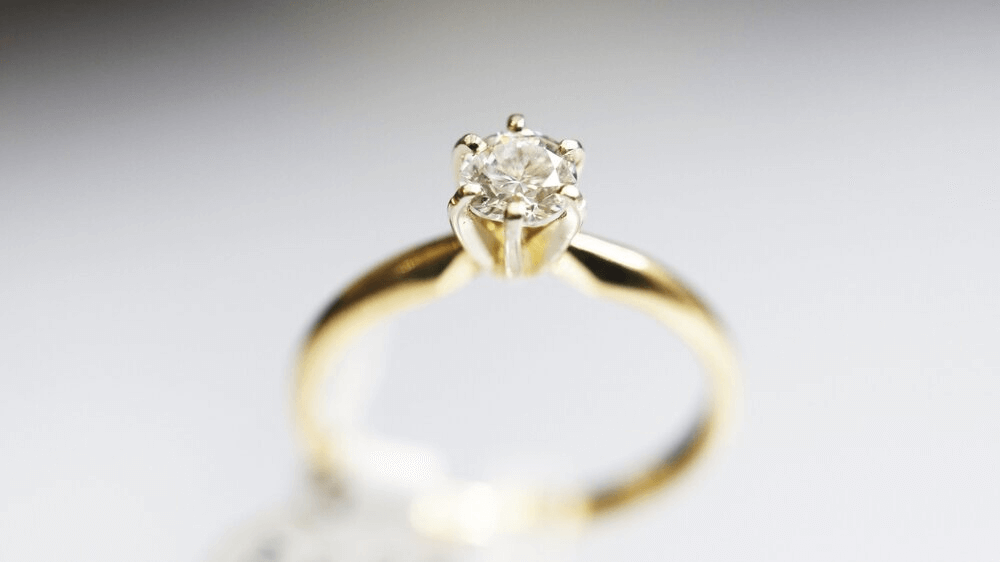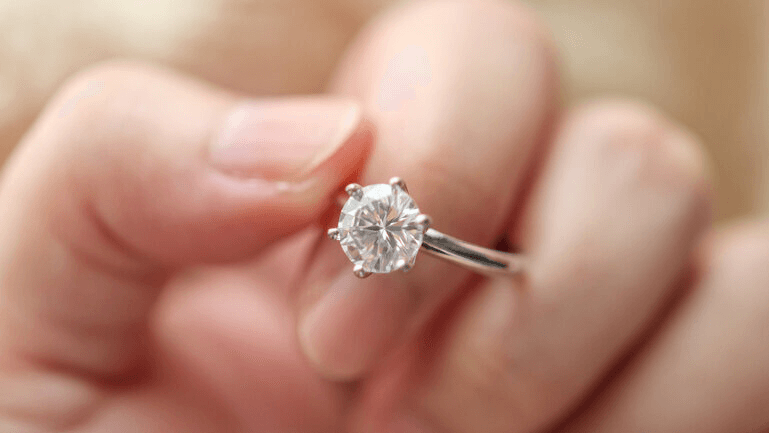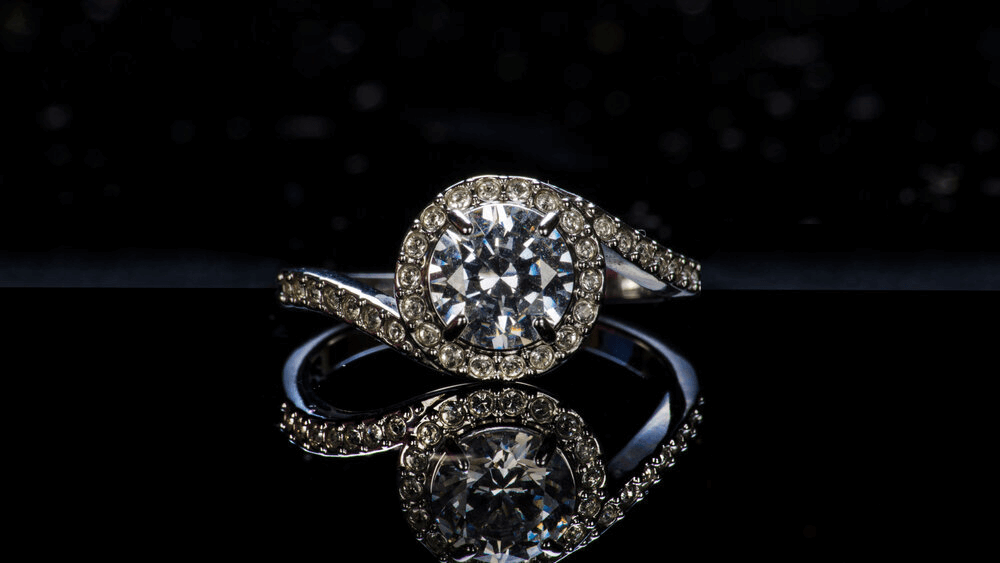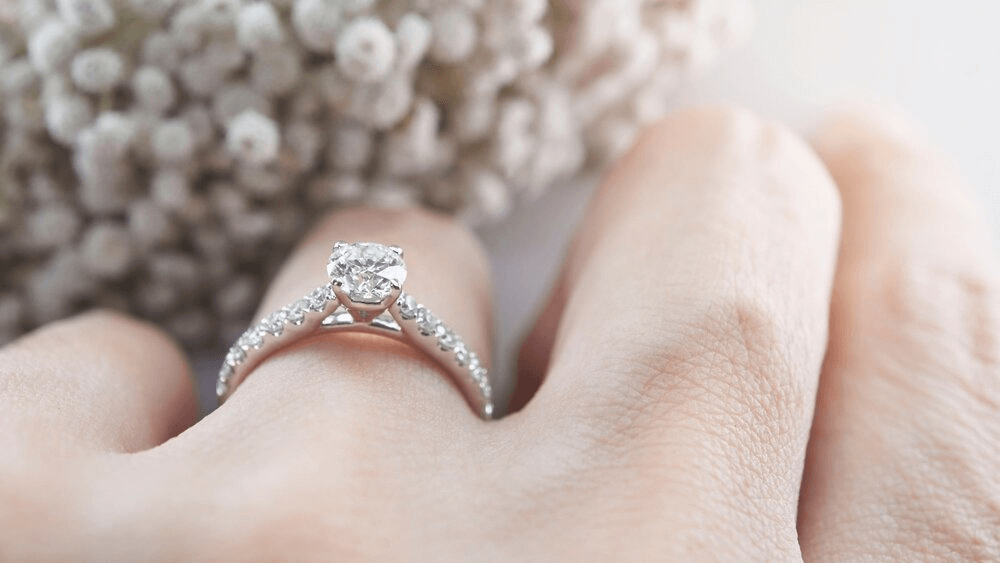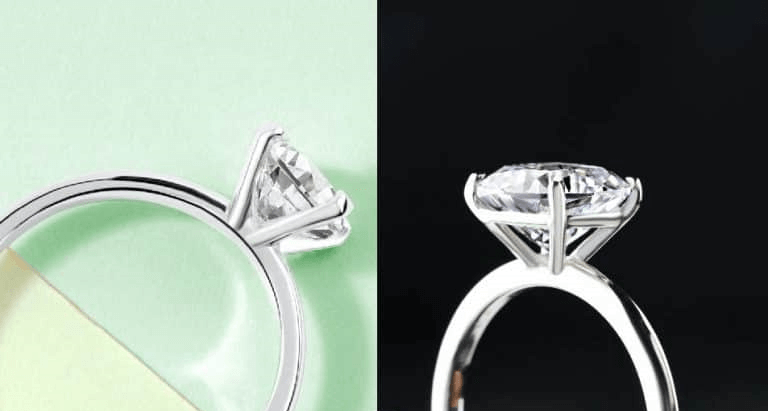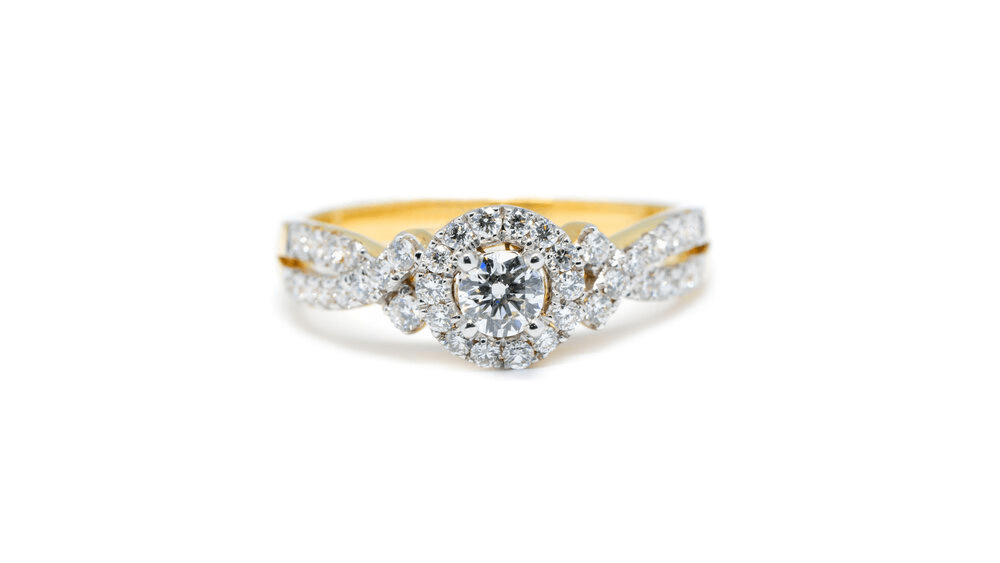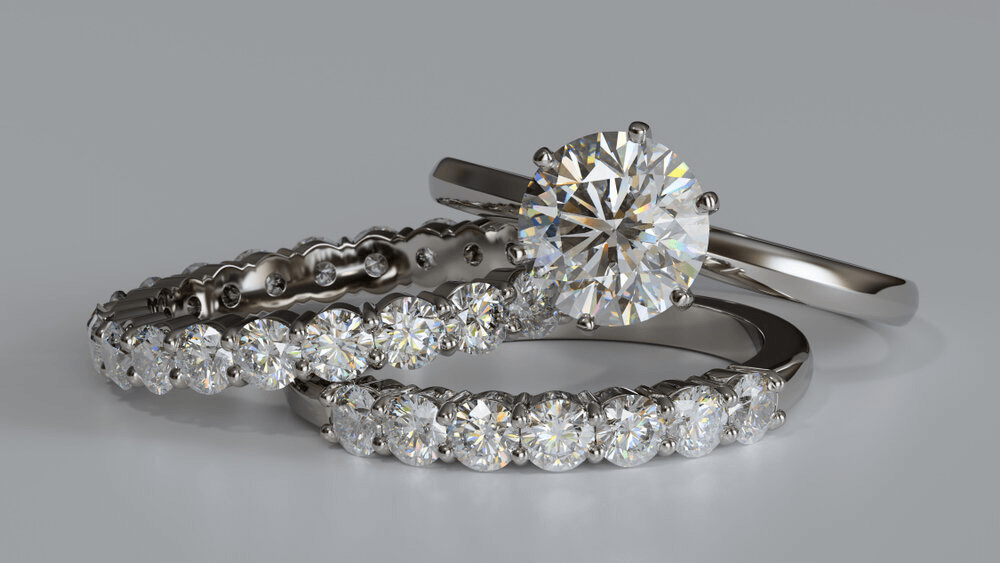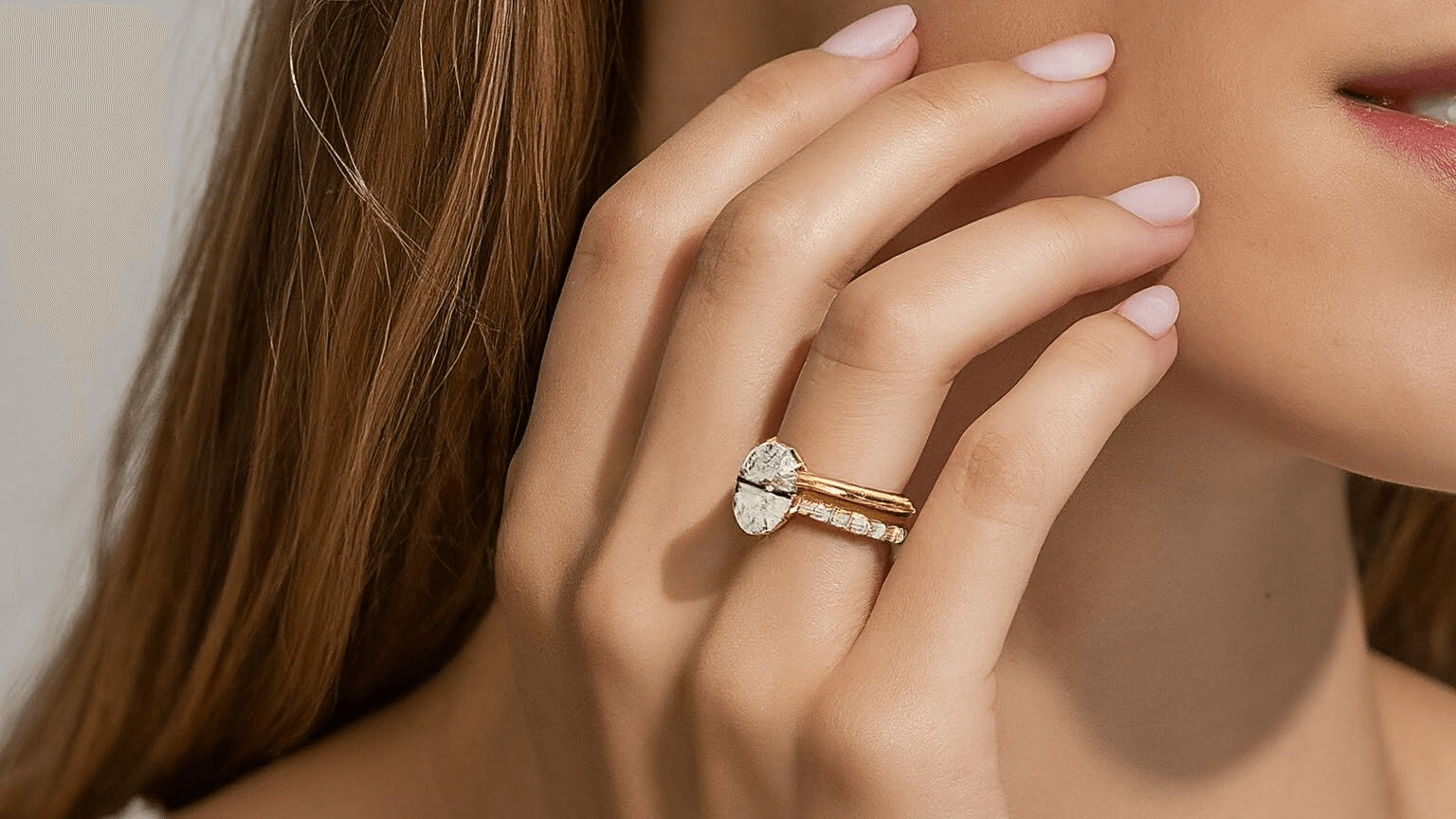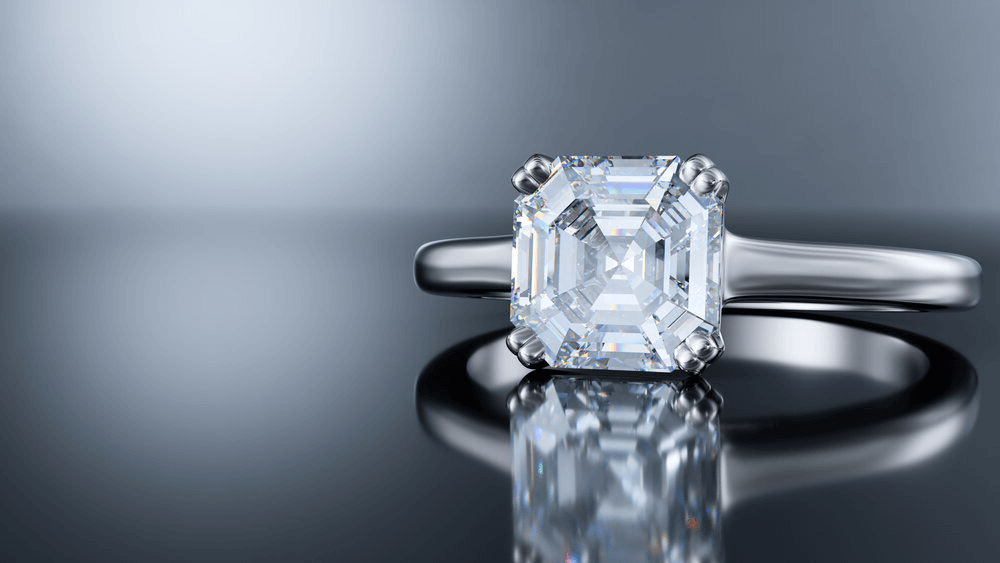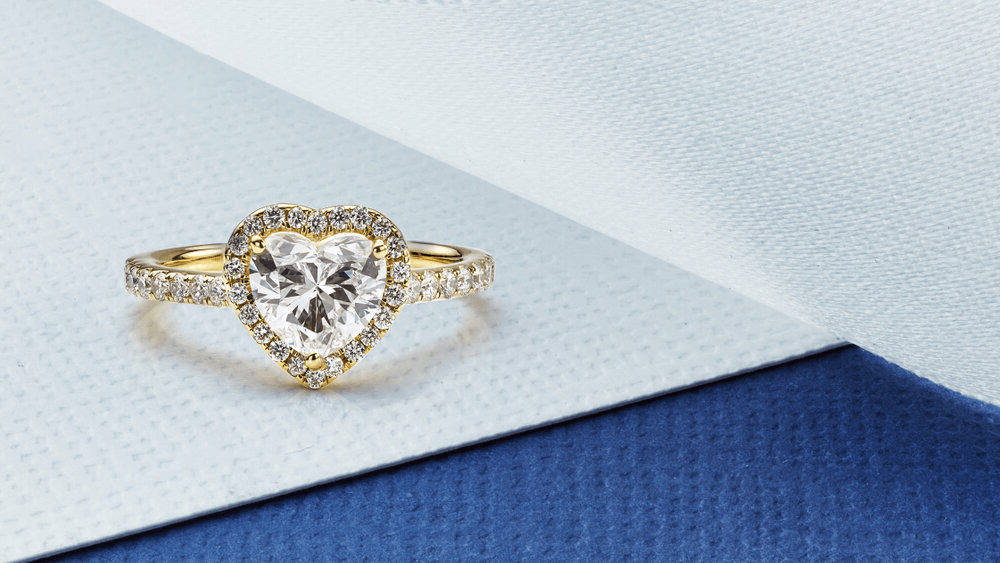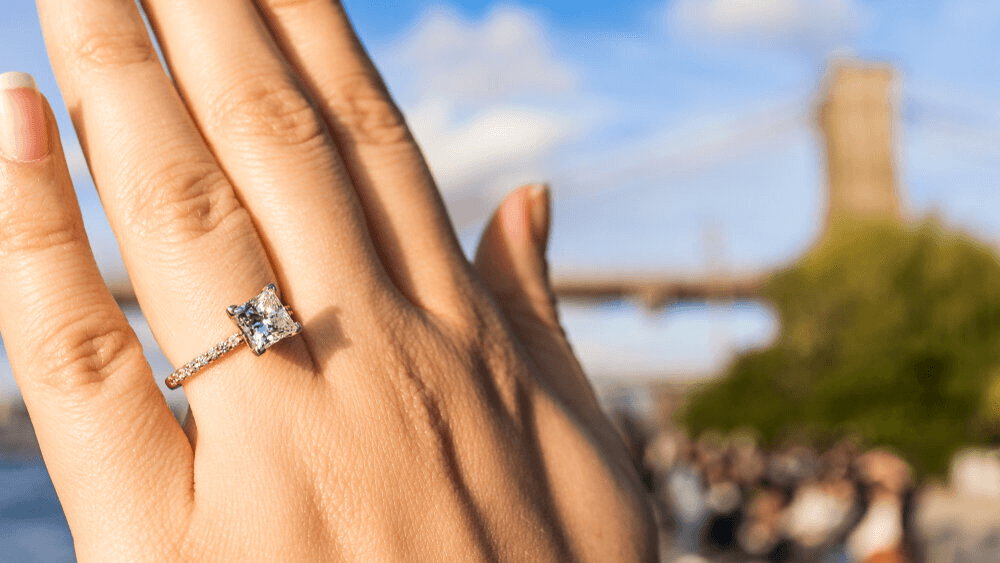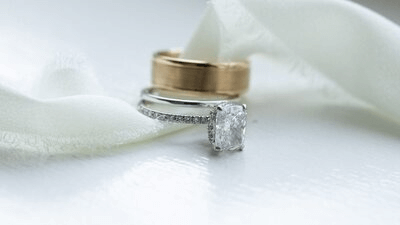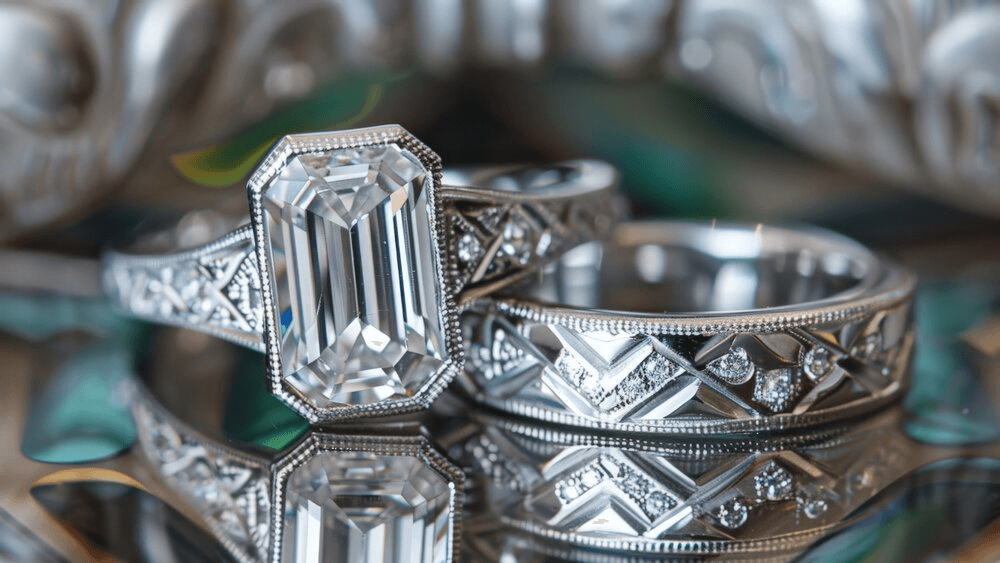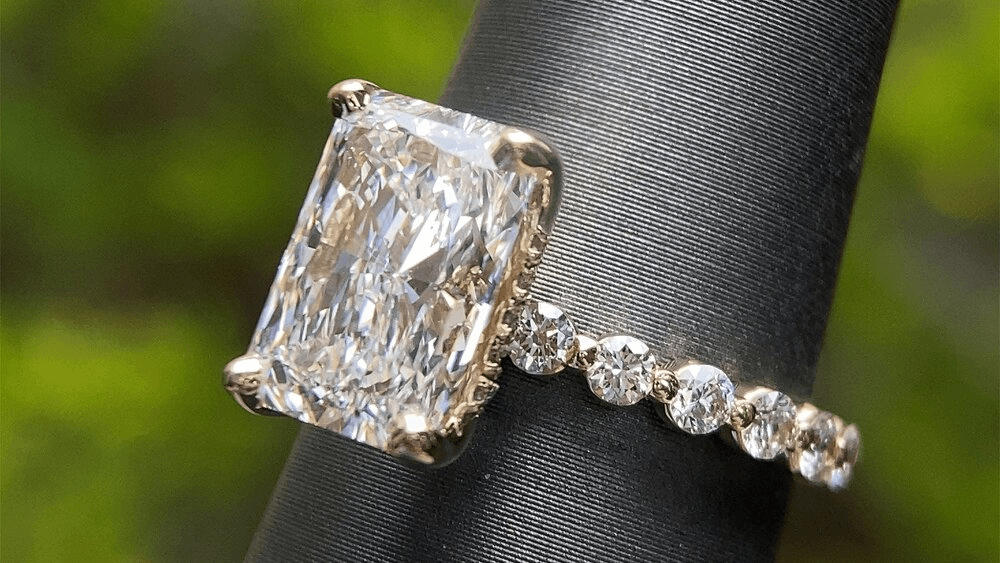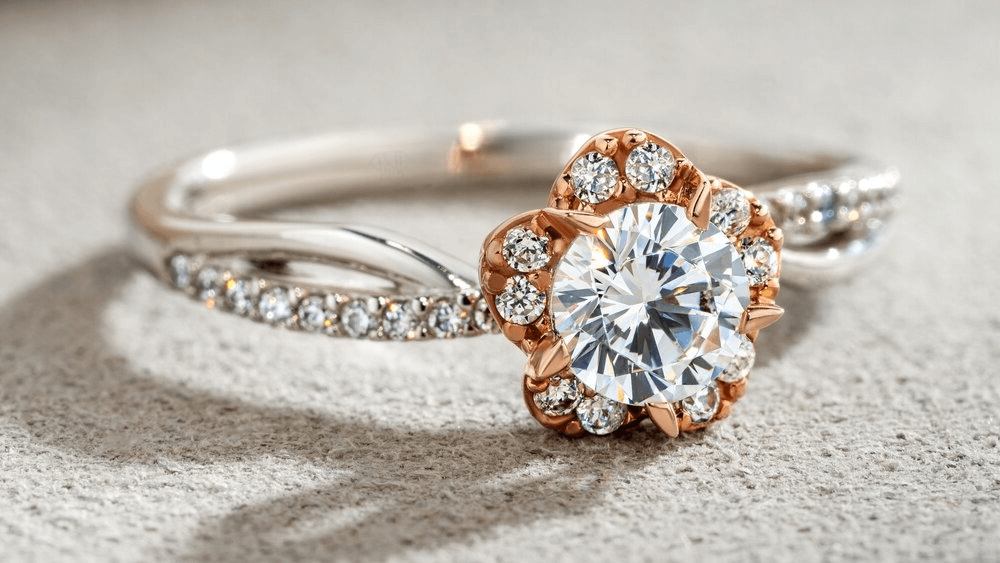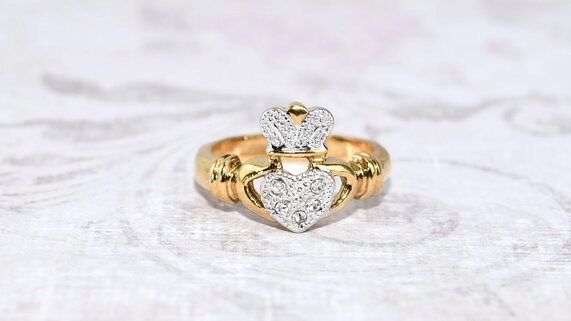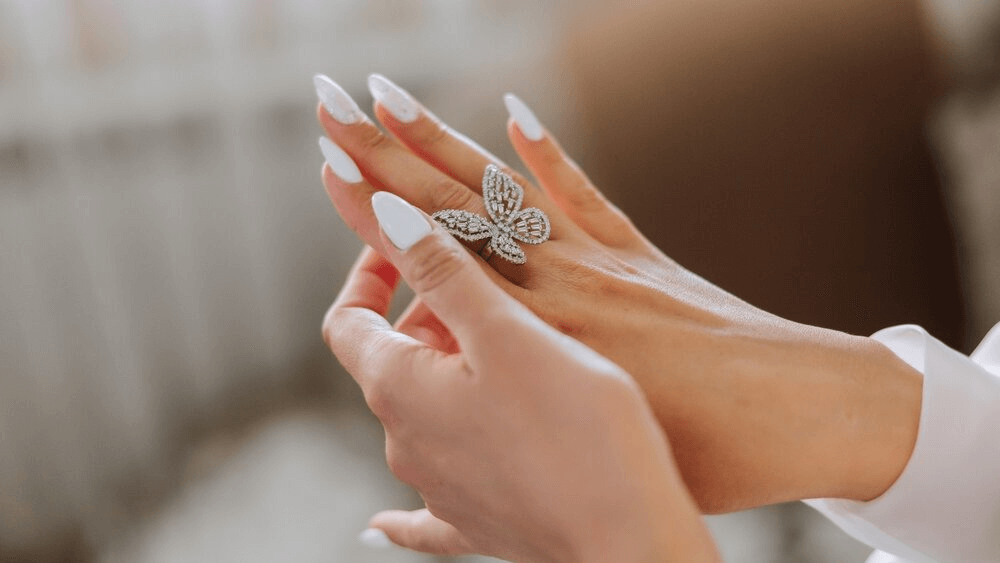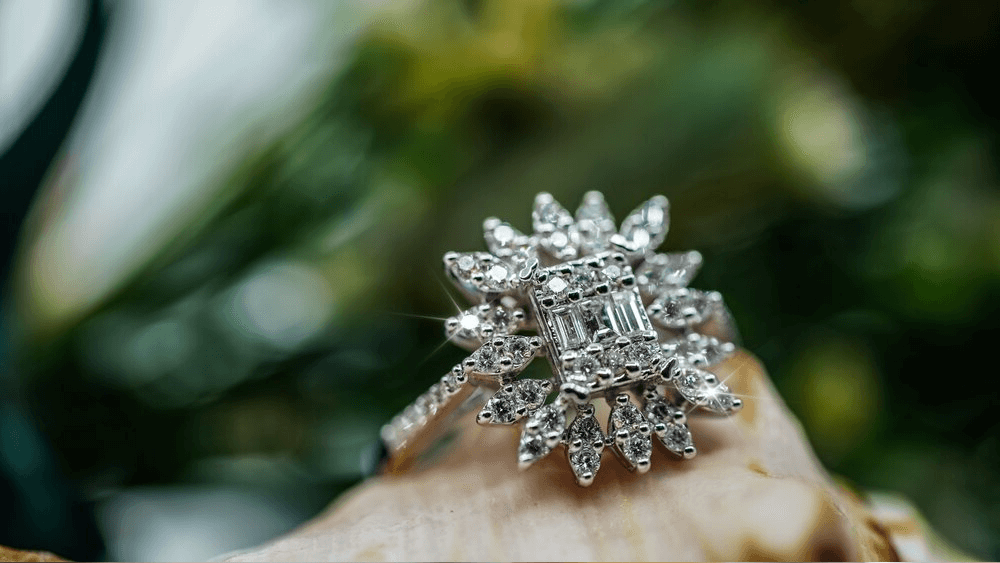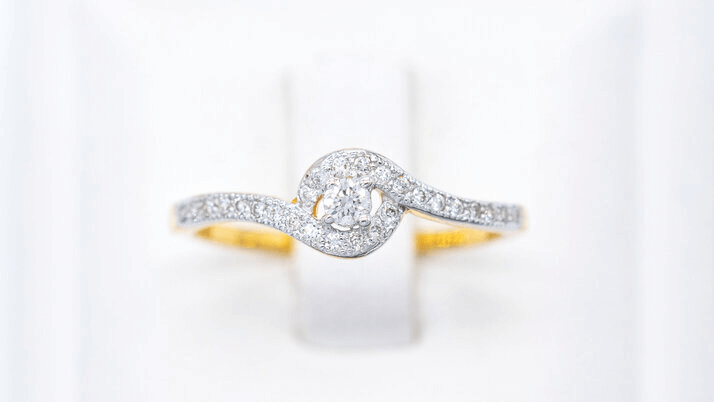Unlock the Secrets of Round Cut Engagement Rings

By Gary A.

Edited by Olivia H.
Published Aug 13, 2024
Edited on Mar 31, 2025
When it comes to round cut engagement rings, few choices are as dazzling, offering timeless brilliance and unmatched elegance that make every proposal unforgettable.

Navigate this guide:
- 4 Quick Tips for Choosing the Right Round Cut Engagement Ring
- The Timeless Allure of Round Cut Rings
- Deciphering the Diamond: The 4 C’s Unveiled
- Setting the Stage: Choosing the Perfect Frame
- Metal Matters: Selecting the Right Band
- Our Expert Take
- 10 Frequently Asked Questions about Round Cut Engagement Rings
Before we dive deeper into the specifics, here are some practical tips to help guide your decision-making process:
4 Quick Tips for Choosing the Right Round Cut Engagement Ring
Tip 1. Understanding the 4 C’s
- Cut: Especially vital for round diamonds, as a high-quality cut will enhance the stone’s brilliance and sparkle. The cut also determines the shape of the diamond.
- Carat: Be aware of your budget and understand how different carat weights visually appear in round cut settings.
- Color: While D is the highest grade, a G-H graded diamond might still appear colorless to the naked eye and could be more budget-friendly.
- Clarity: Unless you opt for a flawless diamond, understanding where inclusions and blemishes are can help you choose a diamond that appears clean to the naked eye.
Tip 2. Choosing the Right Setting
- Safety: Ensure that the setting you choose securely holds the diamond, especially in prong and solitaire settings. For a round cut, a four-prong setting is common.
- Style: Pay attention to whether the setting complements both the wearer’s style and the diamond. For round diamonds, halo settings can enhance size appearance, while solitaire settings often emphasize the diamond itself.
Tip 3. Ring Metal Matters
- Consider the metal that complements the wearer’s skin tone and lifestyle. While platinum is durable and pure, gold (in its various colors) offers a classic or contemporary look.
- Be mindful of any allergies or skin sensitivities to certain metals.
Tip 4. Sizing and Comfort
- Ensure the ring size is accurate for the wearer and ask about resizing options in case of any future adjustments.
- Be mindful of the setting height and overall design, ensuring it’s practical and comfortable for everyday wear.
Now that you’ve got these practical tips, use Jeweler AI below to find the perfect engagement ring that suits your style and budget:
The Timeless Allure of Round Cut Rings
Sometimes, there’s no getting around the fact that the classic is the best option. There is a very good, and a very compelling, reason why the round brilliant remains the most popular diamond cut for engagement rings… by far. Ever since its release just before the mid-century, this shape has dominated the proposal scene and, we’d wager, played a pivotal role in many a yes.
The Quintessential Choice for Love
Look at any marketing campaign, Hollywood movie, or Pinterest board and you’ll notice one thing in particular: almost every picture features a brilliant, fiery, bright round brilliant diamond, usually in a simple solitaire setting.
As a result, a round brilliant engagement ring is the first thing many of us think of when we think of proposals – and, for that reason, saying yes.
Why Round Cuts Reign Supreme
The round brilliant isn’t just a traditional silhouette – and, in all likelihood, the first thing you think of when you think of diamonds. That round silhouette creates the perfect opportunity for complex and intricate faceting, which is exactly what gives the round brilliant diamond shape the superior sparkle it’s known for.
The round brilliant is also strong, sturdy, and unrivalled in terms of versatility for engagement ring designs. Whether you’re looking for the most minimalistic, simple ring, or something a lot flashier, the round brilliant will never disappoint. That is cool providing you understand how to pick a good one…
Deciphering the Diamond: The 4 C’s Unveiled
When you’re choosing a round brilliant diamond, you need to make sure that every single one of the 4Cs is seen to. You cannot afford to underestimate their importance for diamond quality; if you do, there’s a chance you’ll walk away with a poor-quality diamond suffering from diminished sparkle, visible inclusions, color, and poor proportions.
The good news for diamond shoppers looking at round brilliant diamonds is that the GIA offers a dedicated cut grade. For other diamond shapes, the lab merely offers a grading system for proportions and symmetry; these are very useful, but not quite as informative as the cut grade received on round brilliant diamonds.
The rest of the forces are carrot, color, and clarity. You’ll need to understand delete understand have an understanding of each one in order to make a sound choice.
Cut: The Heart of Brilliance
As we mentioned, understanding cut is the key to choosing a good round brilliant diamond. Cut is graded on a scale that runs from excellent through Very Good, Good, Fair, and Poor.
At WillYou, we never recommend that shoppers buy a diamond with anything less than a very good cut grade. Since cut is the main determining factor behind sparkle, sacrificing quality really isn’t a good way to get bang for your money.
Carat: Size and Its Subtleties
A lot of people think that carat pertains to diamond size, but it actually is a measurement of weight — 0.2 grams to be specific. Carat Has the largest bearing on diamond value, with prices increasing exponentially with weight. High carat diamonds are incredibly popular, particularly among those looking to propose – and it’s not hard to see why.
Color: The Hue of True Love
color may seem like an odd consideration if you’re looking to invest in a white slash clear diamond, but it’s actually an incredibly important thing to think about. All diamonds come out of the ground with some pollutants locked under the surface, and nitrogen is incredibly common.
The presence of too much nitrogen causes a diamond to appear yellow and discolored, so avoiding diamonds with two lower color grade is fundamental to choosing a beautiful diamond.
color is graded on a scale that runs from D to Z, with D being the best – i.e., perfect – and Z representing a very yellow, very undesirable diamond.
These grades are subdivided into categories that run from colorless through Near colorless, Faint, Very Light, and Light. We only ever recommend investing in grades from the colorless, or, preferably, the near colorless range – this one will get you much more quality for a much lower investment.
Clarity: Seeing Through the Sparkle
As we mentioned, natural diamonds come out of the ground with certain pollutants trapped within the crystalline structure. This is an unavoidable result of developing in raw, natural conditions. The trick is to find a diamond that contains sufficient inclusions to lower the price substantially since flawless diamonds are beyond most people’s budgets, but not enough inclusions for them to appear visible to the naked eye.
We call these diamonds eye clean, and they are by far the most desirable investment for shoppers.
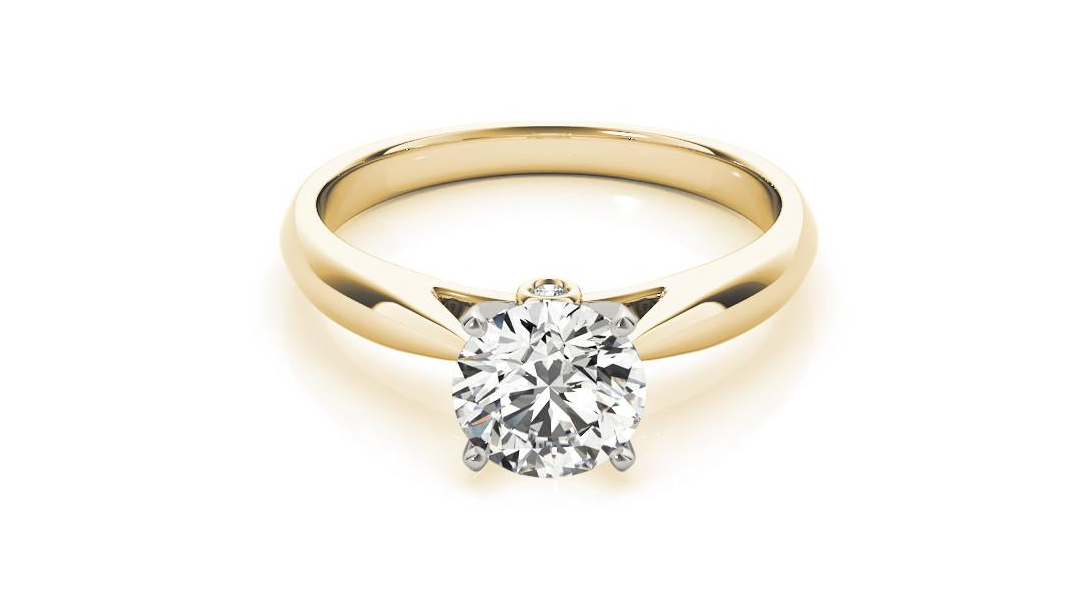
Setting the Stage: Choosing the Perfect Frame
As we mentioned above, round brilliant diamonds are among the most versatile diamond shapes for creating beautiful engagement rings full stop while the shape was only perfected in 1919, that round silhouette offers it a timeless appearance. This means you can integrate a round brilliant diamond in a vintage engagement ring design, or a very modern one, without it looking out of place.
The quintessential engagement ring is the round brilliant solitaire, which is very low and decorative features and showcases the diamond as the one and only centrepiece for the ring. But, if you know your partner would prefer a little extra on the sides (or around the shank) there is plenty of scope for adding embellishments.
Solitaire: Simplicity Meets Elegance
Put simply, a solitaire is a very simple ring design featuring a plain, undecorated band, a simple, unobtrusive centre setting, and a diamond. Solitaires do not feature any accent stones on the ring’s shoulders, or any halo, pavé, filigree, milgrain, hidden halo, or twisting or splitting in the shank. It’s all about that one diamond.
Halo: Amplifying the Radiance
A Halo is a great complement to a diamond, particularly around brilliant shape. The traditional option is to pair around a diamond with a round halo, but a square Halo is becoming an increasingly popular choice for round diamonds.
A traditional halo is a single row of melee diamonds arranged around the diamond’s circumference. You can also find multi row halos, which add even extra weight and sparkle to the ring’s design, or hidden halos, which are wrapped around the base of the diamond. These are great for adding sparkle and detail to the ring, without making that centre diamond feel swamped.
Pavé: A Pathway of Light
This is a very popular addition to many different types of ring designs. Pavé comprises one or more rows of melee diamonds set along the surface of the shank. This adds a great extra dose of sparkle without contributing to the weight and size of the centre setting, which can be a criticism of the halo.
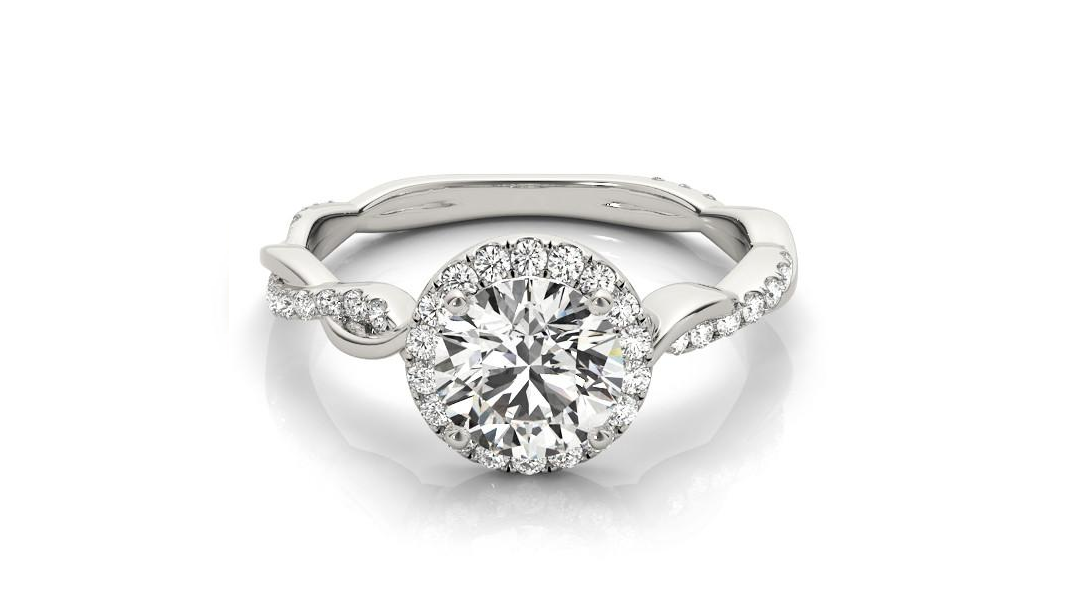
Metal Matters: Selecting the Right Band
Round brilliant diamonds are relatively good at concealing color, so you don’t need to worry too much about a colored metal like yellow or rose gold reflecting too much through the centre of the stone. When pairing a round brilliant with a colored metal, the effect created by that reflection is usually very subtle and beautiful. Think of it like the ripples of sunlight on a river.
Then again, round brilliant diamonds look stunning when paired with colorless metals. White gold and platinum are the classic choice, particularly for the traditional solitaire engagement ring. Since the round brilliant is particularly good at generating fire (aka, the colored flashes of light) that stark, white metal is great for showcasing it.
Gold vs. Platinum: Weighing Your Options
If you’re opting for around brilliant, then there’s a very good chance you’re a stickler for the classics. In that case, you’ve probably already felt the allure of gold. An ancient, ever-beloved symbol of commitment and love, gold – and particularly yellow gold, which is its natural hue – is a clear choice.
Then again, you need to consider the downsides of choosing gold. The softness of the metal means that you can’t use pure gold for an engagement ring, but this has the added benefit of bringing down the cost of your ring. A pure gold ring would cost substantially more than, say, a 14K or 18K gold ring.
The other downside is the fact that, in alloying gold to make it suitable for daily wear, other metals to which some may suffer sensitivities or allergies are introduced. In this case, platinum is the better choice, since it can be used to a much higher degree of purity. Then again, it precludes you from picking a romantic hue like yellow or rose for the engagement ring.
The Hue That Matches You
Remember that the overwhelming majority of people already have a preference for metal. If you look in your partner’s jewelry box, you will probably notice a trend toward a certain color. For instance, a preference for sterling silver and white gold may mean that platinum is the best option; then again, if she exclusively wears yellow gold, don’t go for white metal.
Some people don’t mind what metal they wear and enjoy mixing metals, but it’s still considered a pretty controversial style choice. A lot of us remain old-fashioned about sticking to one or the other.
Our Expert Take
We would never talk anyone out of a round brilliant diamond for their engagement ring. It is the tried and true, heart stopping, romantic symbol of all things love, And it’s hard to imagine a beautiful round brilliant diamond producing A disappointing engagement ring.
Think about whether you want the round brilliant to do all the talking, as it has done since the 1920s, or whether you want to dress it up (or down) to suit your partner’s tastes.
10 Frequently Asked Questions about Round Cut Engagement Rings
- Q: What makes a round cut engagement ring so popular?
- Round cut diamonds are cherished for their unmatched brilliance and timeless appeal, making them a classic choice for engagement rings. Their shape allows for maximum light reflection, resulting in a captivating sparkle.
- Q: How do I choose the right setting for a round cut diamond?
- Select a setting that enhances the diamond’s natural beauty and matches the wearer’s lifestyle. Popular choices include solitaire for a classic look, halo for added sparkle, and pavé for a sophisticated flair. Consider the security of the diamond and the ring’s daily wearability.
- Q: Are round cut diamonds more expensive than other shapes?
- Yes, round cut diamonds can be more expensive due to their high demand and the significant amount of rough diamond lost during cutting. However, their unparalleled brilliance often justifies the higher price.
- Q: What is the best metal for a round cut engagement ring?
- The best metal depends on personal preference and lifestyle. Platinum is durable and hypoallergenic, while gold (white, yellow, or rose) offers a traditional or modern look. Consider the wearer’s skin tone and any metal allergies.
- Q: Can I get a round cut diamond in a vintage setting?
- Absolutely! Round cut diamonds are incredibly versatile and can be set in various vintage designs, from Art Deco to Victorian styles, adding a timeless elegance to the ring.
- Q: How important is diamond clarity in a round cut engagement ring?
- Clarity is important, but round cut diamonds are forgiving with inclusions due to their brilliant faceting. Choose a diamond that appears clean to the naked eye (typically SI1 or higher) for the best value.
- Q: What should I look for in a round cut diamond’s cut quality?
- Aim for an “Excellent” cut grade to ensure maximum brilliance and fire. The quality of the cut greatly influences the diamond’s sparkle, making it a crucial aspect to consider.
- Q: How can I make a round cut diamond appear larger?
- Opting for a halo setting can make the central diamond appear larger. Additionally, choosing a slim band can make the diamond stand out more, giving the illusion of a larger stone.
- Q: Is a round cut engagement ring suitable for an active lifestyle?
- Yes, with the right setting. A bezel or flush setting can offer more protection for the diamond, making it suitable for someone with an active lifestyle. Ensure the setting secures the diamond well.
- Q: How do I clean and care for my round cut engagement ring?
- Clean your ring regularly with a solution of warm water and mild dish soap, gently scrubbing with a soft-bristled brush. Avoid harsh chemicals and physical impact to maintain the ring’s beauty. Regular professional check-ups are recommended to ensure the setting’s integrity.
FOLLOW-UP GUIDE SERIES





